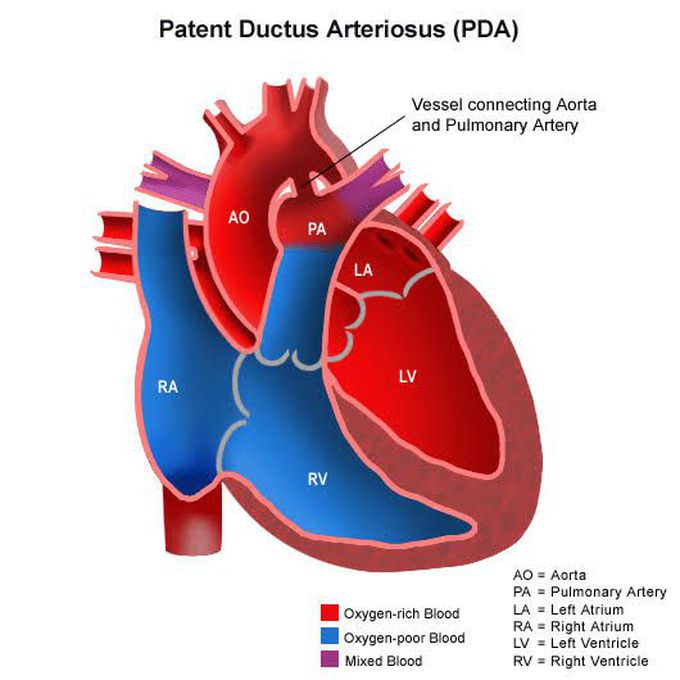


Patent Ductus Arteriosus- Treatment
Patent Ductus Arteriosus (PDA) treatment options depend on the severity and symptoms. For small PDAs, monitoring may be sufficient, as they can close on their own. Medications like indomethacin or ibuprofen can help close the opening in some cases, particularly in premature infants. Larger PDAs, or those causing significant symptoms, may require procedures like cardiac catheterization or surgery to close the connection. Treatment Options: Observation/Monitoring: If a small PDA doesn't cause significant symptoms, it may be monitored to see if it closes on its own, which is common in the first few months of life. Medications: Indomethacin or ibuprofen can be administered to help constrict the ductus arteriosus and encourage closure, especially in premature infants. Cardiac Catheterization: This minimally invasive procedure involves inserting a catheter into a blood vessel and guiding it to the PDA, where a coil or plug is used to close the opening according to Johns Hopkins Medicine. Surgery: Surgical closure, often with stitches or clips, is reserved for larger PDAs or when other methods are not suitable.

